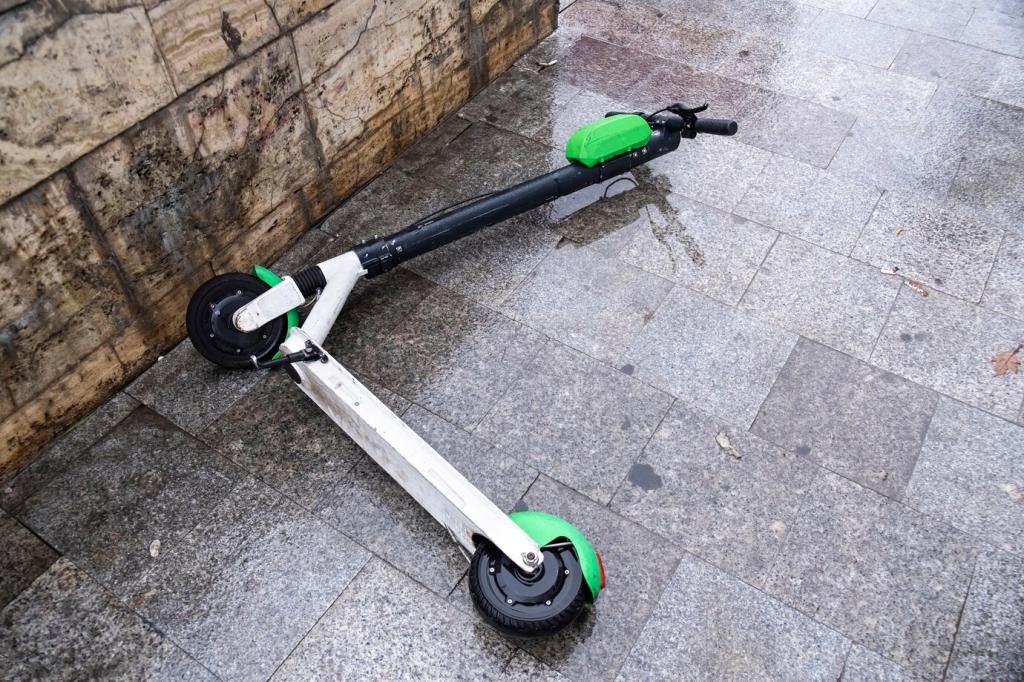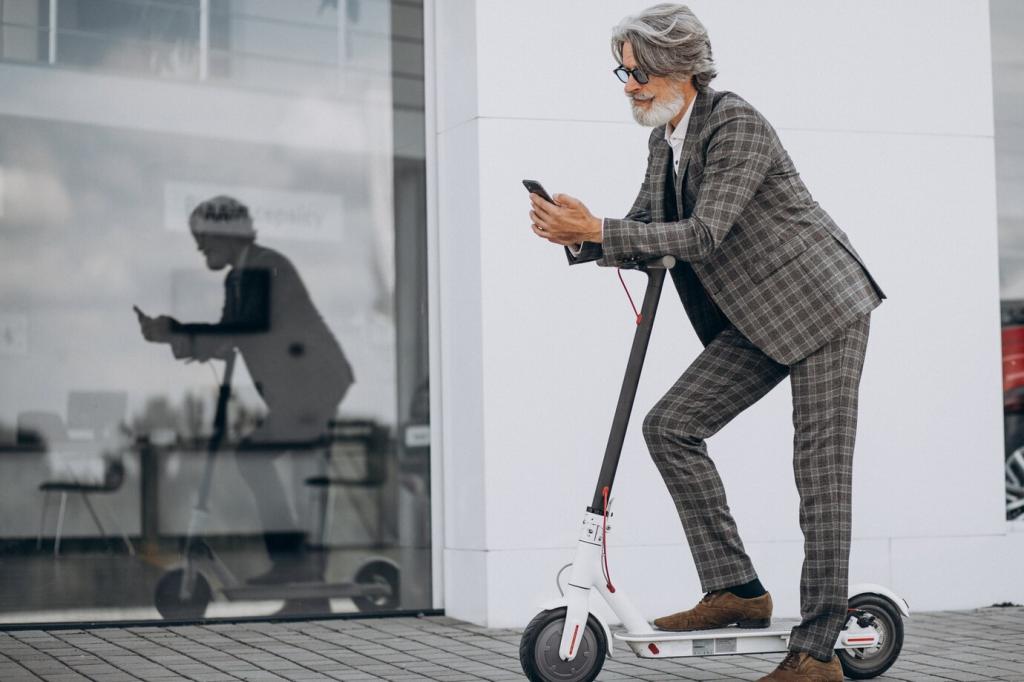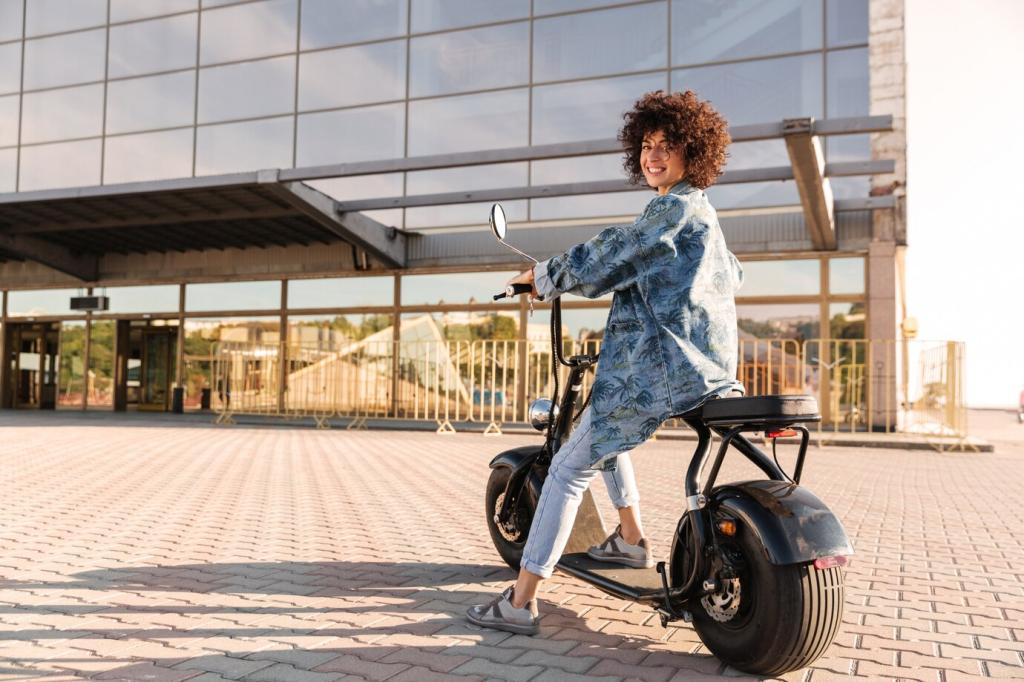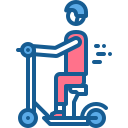
Electric Scooters and Smart City Integration: Riding into Connected Urban Futures
Chosen theme: Electric Scooters and Smart City Integration. Welcome to a friendly hub where technology meets streetscapes, data fuels smoother trips, and every short ride tells a bigger story about how cities become safer, cleaner, and more human.
Why Electric Scooters Matter in Smart Cities
From Last-Mile Gaps to First-Choice Rides
When a bus stop lands half a mile from your destination, electric scooters turn frustration into freedom. Integrated with transit apps, they convert awkward walks into dependable minutes, aligning personal convenience with citywide mobility goals.
A Quick Anecdote from a Rainy Morning Commute
I once watched a soaked crowd hesitate under a station awning until a rider scanned a nearby scooter. The app rerouted them along grippy pavement, slowed speeds automatically, and delivered them on time—dry enough to smile.
Join the Conversation
Have you swapped a short car trip for a scooter ride? Share that moment with us, subscribe for urban mobility stories, and help others discover practical tips for navigating cities with confidence and delight.
IoT Sensors and Real-Time Telemetry
Scooters constantly signal battery health, precise location, and ride status. Cities combine this live telemetry with street data to manage speed zones, detect hazards, and coordinate maintenance—quiet, digital choreography keeping journeys reliable and predictable.
Open Data Standards that Make Cities Smarter
Specifications like GBFS and MDS help operators and city agencies speak a common language. With interoperable feeds, planners see availability patterns, transit connections, and curb pressure, enabling smarter policies that reward safe riding and equitable access.
Charging, Docks, and Power Management
Smart docks, swappable batteries, and grid-aware chargers reduce downtime and energy waste. Cities can nudge charging during off-peak hours, easing strain on the grid while keeping fleets ready for morning commutes and spontaneous lunchtime errands.

Safety, Equity, and Trust by Design
Collision heatmaps guide better infrastructure, while adaptive speed caps protect riders near schools and busy plazas. Geofencing, clear in-app education, and predictable street design bring scooters into alignment with cities’ Vision Zero commitments.
Safety, Equity, and Trust by Design
Equitable pricing, cash top-ups, and adaptive vehicles widen access. Clear curb policies and designated parking reduce clutter. When integration is thoughtful, e-scooters serve shift workers, students, and seniors with dignity, not just app-savvy urbanites.
Sustainability, Data, and Urban Planning
Mode-shift metrics reveal when scooters truly replace short car trips. With emissions dashboards, planners track avoided CO2, guiding investments toward protected lanes and shaded routes that make sustainable choices effortless, not aspirational.
Sustainability, Data, and Urban Planning
Digital corrals and designated zones reduce sidewalk clutter. Aggregated, privacy-preserving data helps planners reallocate curb space for scooters, deliveries, and parklets, balancing convenience with walkability and keeping streets welcoming for everyone.


Seamless Journeys: App UX and Multimodal Orchestration
Mobility-as-a-Service platforms let you plan, book, and pay across scooters, buses, and trains. Deep links, open payments, and real-time arrivals reduce uncertainty, helping riders glide between modes with confidence and fewer taps.

What’s Next: Autonomous Ops, Better Batteries, and Urban Hubs
01
Semi-autonomous repositioning, sidewalk robots, and predictive maintenance models will place scooters where demand peaks. Expect fewer vehicle miles for retrieval, quicker repairs, and fleets that feel magically available when you actually need them.
02
Swappable modules, durable LFP cells, and rigorous recycling loops lower lifecycle emissions. Smart charging tied to renewable peaks keeps rides clean, while repairable designs reduce waste and extend the useful life of each scooter.
03
Future microhubs will offer shade, universal charging, tactile guidance, and clear signage. Integrated with bus shelters and bike lanes, they’ll welcome riders to pause, switch modes, and share feedback that continuously improves the network.
